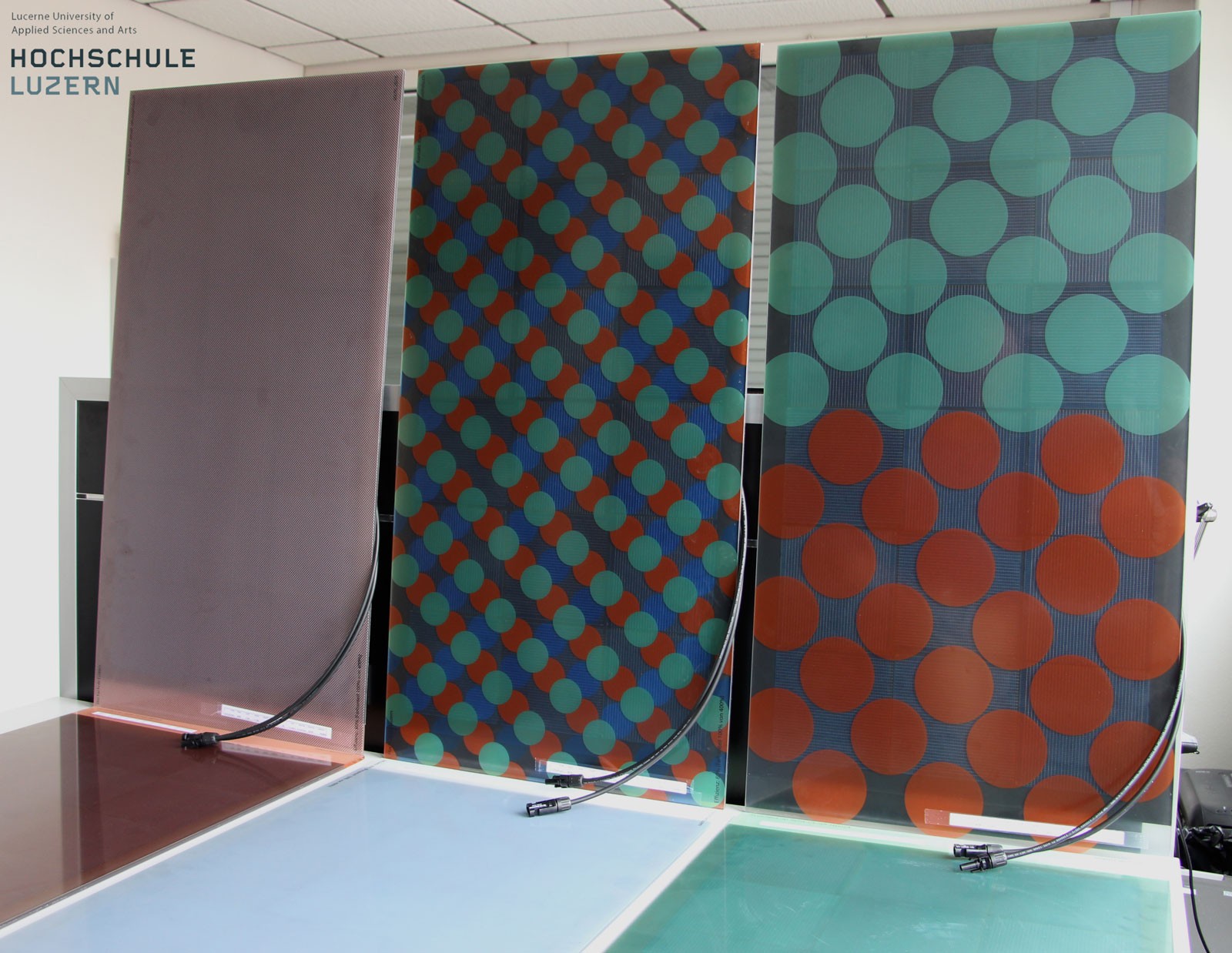On the shores of Lake Zurich, not far from the city centre, the Solaris residential building’s terracotta-coloured facade glistens in the sunlight. This is not only an attractive style element intended to remind passers-by of the light reflections on the lake: the facade also produces electricity thanks to 1,300 individual photovoltaic cells, hidden behind printed glass, that convert solar energy into electricity. The building produces 40,000 kilowatt hours of electricity per year, thus completely meeting the energy requirements of its tenants. Stephen Wittkopf and his team at the Lucerne University of Applied Sciences and Arts have participated in the development of these innovative PV modules. The colours and patterns are printed on the glass surface of these elements using a digital ceramic printing process.

The final appearance results from the transparent colour of the printed glass and the dark colour of the underlying solar cell. As the printing ink differs from the intended final colour, the researchers at the Lucerne University of Applied Sciences and Arts had to optimise the colour settings, so as to obtain the desired electrical output. This was far too low in the first conventionally produced PV modules.















